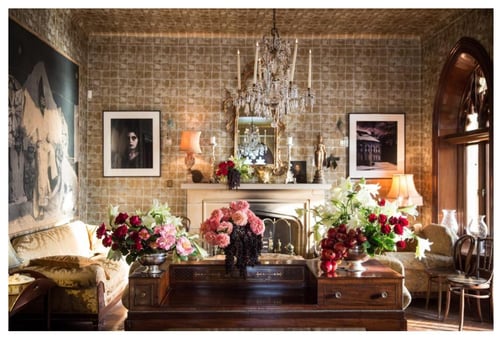
Photo caption: When you’re developing your own art style, you might need to adjust your style a bit, depending on the market. Image by StockSnap from Pixabay.
As you continue to contribute beauty to the earth as an artist, more opportunities in different arenas of the art world will arise. Two such arenas are the decorative and the fine art markets.
Decorative art has more of a focus on work that is suitable to be displayed in specific interior spaces that will be seen by the general public, whereas fine art is focused on individual collectors.
These two markets have similarities and differences, but both are incredibly valuable and provide people with powerful, transformative art.
Becoming a Professional Artist: The Versatility of Your Voice
It is really fascinating to witness the evolution of your voice as an artist when you have experience in both the decorative and fine art markets. Shifting gears and playing to your strengths in each category is invaluable when you’re learning how to become a professional artist. In fact, it’s an important quality even if you’re a seasoned pro.
Because of the differences in each type of market, unique aspects of your voice (and therefore, your superpower) will shine through the piece. For example, your decorative art may be more simplified in color palette or subject matter, but this simplification is a great training exercise to be able to say more with less as you’re developing your own art style.
Your fine art will most likely be more intricate, and profoundly impact the collector, but it may not be seen in person by as many people as your decorative art.
The possibilities that come with creating for both art markets are not only very lucrative, but they allow for more truly meaningful art to be seen by more people.
Consider the impact that both types of your art will have on private collectors and the masses alike.
The Translation of Your Voice in Both Markets
The most important thing to remember when creating art for decorative and fine art (and in general) is to allow yourself to be free. In both arenas, it’s always best not to try to “say something” in your work. It will look contrived and end up feeling like a riddle that will be impossible for the viewer to figure out.
Pay attention to your personal aesthetic, symbols and subjects you are drawn to and love to paint and how your temperament informs the look of your work. Honor the way you lay down paint.
There is room for whatever feeling your work evokes in both decorative and fine art. Whether it is traditional, abstract, minimal, colorful, etc, stay true to your artistic instincts and enjoy the unique ways your voice will be expressed in both markets.
No matter what, staying true to making art that you love will ultimately attract the audience that you desire in either market. Both avenues allow for your work to meaningfully touch many people.
Becoming a Professional Artists: Working in Fine Art
Fine art usually allows for more time to be committed to each piece, which generally means that it is more intricate in subject matter and detail. As a result, the symbolism present may be very powerful, and the individual piece will be worth more money than a piece of decorative art.
It’s also important to note that in some collector circles, adding fine art to a space increases the value of the overall space. In light of this, some real estate companies are using fine art to sell apartments, homes and other spaces. In this market, the buyer wants a ready-made, yet tailored-to-them space to move into.
A 2020 Forbes report highlighted this phenomenon. What’s important again here to say is that the voice of the individual artists in the Forbes report added to the value of the space and played a key role in the sale of the property.
You can see that report below.
Video caption: How Fine Art Is Closing Deals On Multi-Million Dollar Homes | Forbes
Finally, it’s important to understand that artists who work in markets like these may have fewer collectors than those who work in the decorative market. However, the art that they sell comes at a higher price point, and the buyers of the art do so, in part, because they love the artist’s style and voice.
Developing a Style for the Decorative Market
There is a misconception that decorative art is watered down, and artists who create it have to sacrifice their own voice in order to make pieces that will simply “look nice” in a room.
There is, however, another encouraging perspective; it is seeing decorative art as a secret weapon. Remember, the most powerful impact is often felt in the most unpredictable ways.
Decorative art does not have to be cheesy or boring. It can be versatile, refreshing, and deeply inspiring.
The freedom that comes with not feeling as much pressure to “perfect” what you consciously set out to paint will actually allow you to be open to more possibilities and discoveries. Keep this idea in mind as you are learning how to develop your art style.
Captivate Audiences Everywhere by Developing Your Art Style
Your true voice will always speak to the current culture and move it forward. Regardless of the type of creative act you engage in, you will always bring your personal strengths and triumphs to the project. It’s one of the most important lessons you’ll learn as you work toward becoming a professional artist.
Remember, there is always power in your voice, no matter what type of art you create. For more inspiration, tutorials, and connection with other artists from around the world, join our Milan Art Community.
Learn More About Developing Your Artistic Voice…
How to Improve as an Artist: The Difference Between Taste and Style
From Apprentice Artist to Master: Art Lessons From Da Vinci
5 Reasons Why Artists Keep a Daily Sketchbook

